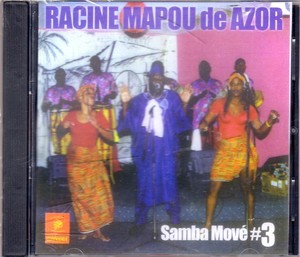
After the temple, they move from house to house collecting money and occasionally engaging in low level conflict with other groups. The bands set out on foot from the ounfo (temple) onto the streets where they attract their followers. These bands are led by presidents, colonels, queens and other members of the complex rara hierarchies. However, the leading instruments in these celebrations are the vaksin, cylindrical trumpets made of bamboo, and the klonet, made of hammered zinc and ending in a flared horn. Rara processions incorporate various types of musical instruments such as kongo or petro drums, twompet (trumpets), tcha-tcha (maracas), graj (metal scrapers), bells, kes (doubled headed and stick beaten, often with a snare like device), flutes, saxophones, and various kinds of rattles made from zinc such as the tchancy, a can filled with seeds. In the Dominican Republic, this tradition is known as gaga. Perhaps more crucially, these bands express much about the current realities of Haitian social, spiritual, and political life as they perform religious work for Voudoun spirits, solidify the notion of community through the patronage of local big men, and contest political oppression. Through the performance of music, song, and dance during long parades of many miles, Rara bands serve participants and audiences by recalling to memory an oppressed and brutal past. Rara is a vibrant annual street festival in Haiti, when followers of the Afro-Creole religion called Vodou march loudly into public space to take an active role in politics.ĭuring the six weeks between the eve of Lent and Easter Week, Haitian Rara bands take to the streets, offering the urban and rural poor of Haiti an opportunity to negotiate power under conditions of political and economic insecurity as well as publicly celebrate Vodoun religious culture. When Baby Doc was run out of the country in 1986, African-derived racine, or roots, music exploded. The Duvalier dictators favored compas dance music, and suppressed the most African-identified cultural expressions.

We explore how each of Haitis rulers has championed his own preferred music. A primary source of Haitian culture is Dahomey, the birthplace of vodouthe most commonly held world view among Haitian people today. "From Vodou to Compas to Racine to Rara and Beyond: Haiti became the first black-ruled republic in the Americas in 1804, and music has mirrored, and at times shaped, the twists and turns of Haitis politics and culture ever since.


INFORMATION ABOUT RARA AND RARA/RACINE MUSIC

Thanks also to all those who are quoted in this post and thanks to the publisher of this video on YouTube. Thanks to Kemelit and its lead drummer Azor for their musical legacy. This post is presented for folkloric, religious, cultural, entertainment, and aesthetic purposes. Selected comments from this video's discussion thread are also included in this post. This post also provides information about Kamekit's lead drummer Lénord Fortuné, also known as "Azor". This pancocojams post showcases a video of the song "Racine Mapou De Azor" by the Haitian Racine/Rara band "Kamelit" and provides information about Rara/Racine music.


 0 kommentar(er)
0 kommentar(er)
